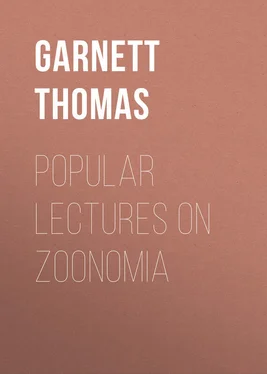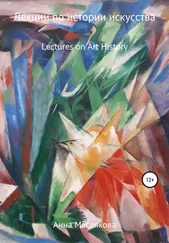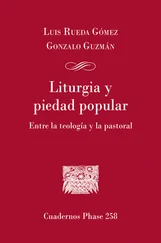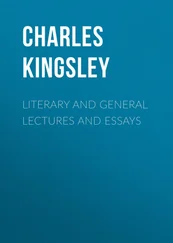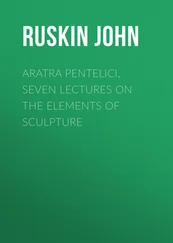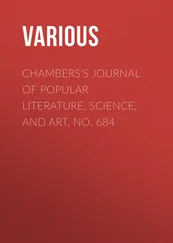Thomas Garnett - Popular Lectures on Zoonomia
Здесь есть возможность читать онлайн «Thomas Garnett - Popular Lectures on Zoonomia» — ознакомительный отрывок электронной книги совершенно бесплатно, а после прочтения отрывка купить полную версию. В некоторых случаях можно слушать аудио, скачать через торрент в формате fb2 и присутствует краткое содержание. Жанр: Биология, foreign_antique, foreign_prose, на английском языке. Описание произведения, (предисловие) а так же отзывы посетителей доступны на портале библиотеки ЛибКат.
- Название:Popular Lectures on Zoonomia
- Автор:
- Жанр:
- Год:неизвестен
- ISBN:нет данных
- Рейтинг книги:4 / 5. Голосов: 1
-
Избранное:Добавить в избранное
- Отзывы:
-
Ваша оценка:
- 80
- 1
- 2
- 3
- 4
- 5
Popular Lectures on Zoonomia: краткое содержание, описание и аннотация
Предлагаем к чтению аннотацию, описание, краткое содержание или предисловие (зависит от того, что написал сам автор книги «Popular Lectures on Zoonomia»). Если вы не нашли необходимую информацию о книге — напишите в комментариях, мы постараемся отыскать её.
Popular Lectures on Zoonomia — читать онлайн ознакомительный отрывок
Ниже представлен текст книги, разбитый по страницам. Система сохранения места последней прочитанной страницы, позволяет с удобством читать онлайн бесплатно книгу «Popular Lectures on Zoonomia», без необходимости каждый раз заново искать на чём Вы остановились. Поставьте закладку, и сможете в любой момент перейти на страницу, на которой закончили чтение.
Интервал:
Закладка:
But the motion of the fluids in an animal body, is less uniform, constant, and regular; it takes place upwards as well as downwards, and overcomes numerous obstacles; it carries the blood from the interior parts of the body to the surface, and from the surface back again to the internal parts; it forces it from the left side of the body to the right, and with such rapidity that not a particle of the fluid remains an instant in the same place.
The principal organ concerned in the circulation of the blood, is the heart; which is a hollow muscle, of a conical figure, with two cavities, called ventricles; this organ is situated in the thorax or chest; its apex or point is inclined downwards and to the left side, where it is received in a cavity of the left lobe of the lungs.
At the basis of the heart on each side are situated two cavities, called auricles, to receive the blood; and these contracting, force the blood into the ventricles, which are two cavities in the heart, separated from each other by a strong muscular partition. The cavity which is situated on the right side of the heart, is called the right ventricle, and that on the left the left ventricle. From the right ventricle of the heart issues a large artery, called the pulmonary artery, which goes to the lungs, and is there divided and subdivided into a vast number of branches, the extremities of which are too small to be visible. These ultimate ramifications unite again into larger branches; these again into branches still larger, and so continually, till at last they form four tubes, called the pulmonary veins, which are inserted into the left auricle of the heart,
From the left ventricle of the heart there issues another large artery, called the aorta, which, in its passage, sends off branches to the heart, arms, legs, head, and every other part of the body. These branches, in the course of their progress, are divided and subdivided into innumerable minute ramifications, the last of which are invisible. These small ramifications unite again into branches continually larger and larger, till they form two great tubes, called the venae cavae; which large veins are inserted into the right auricle of the heart; where a vein, termed the coronary vein of the heart, which returns the blood from the heart itself, also terminates.
From what has been said, it will be evident, that strictly speaking, there are only two arteries and seven veins in the body; one pulmonary artery, which carries the blood from the right ventricle of the heart to the lungs, and four pulmonary veins, which bring it back again; then the aorta or large artery, which carries the blood from the left ventricle of the heart to all parts of the body; the two venae cavae, and the coronary vein of the heart, which bring it back again.
At the beginning of both arteries, where they leave the heart, are placed valves, which allow the blood to flow freely from the heart into the arteries, but which prevent its return to the heart. There are likewise valves between the auricles and ventricles, which permit the blood to flow from the former into the latter, but prevent its return into the auricles. The veins are likewise furnished with valves, which allow the blood to flow from their minute branches along the larger toward the heart, but prevent its returning to these minute branches.
The blood being brought back from all parts of the body into the right auricle of the heart, distends this cavity, and thus causes it to contract; this auricle, by contracting, forces the blood into the right ventricle; this muscular cavity being distended and irritated by the blood, contracts, and propels the blood through the pulmonary artery into the lungs: from hence it is brought back by the pulmonary veins, to the left auricle of the heart, by whose contraction it is forced into the left ventricle. The contraction of this ventricle propels the blood, with great force, into the aorta, through the innumerable ramifications of which, it is carried to every part of the body, and brought back by veins, which accompany these arterial ramifications, and form the venae cavae, which conduct the blood into the right auricle of the heart, from whence it is again sent into the right ventricle, which sends it through the pulmonary artery, to the lungs; the pulmonary veins bring it back again to the heart, from whence it is propelled through the aorta, to all parts of the body: thus running a perpetual round, called the circulation of the blood.
Thus then we see, that the circulation consists of two circles or stages, one through the lungs, which may be called the pulmonary, or lesser circle, and the other through all parts of the body, which may be termed the aortal, or greater circle.
That the blood circulates in this manner, is evident, from the valves placed at the origin of the arteries, and in the large branches of the veins, which prevent the return of the blood to the heart, in any other manner than that I have described. This is likewise evident, in the common operation of blood letting: when the arm is tied, the vein swells below the ligature, instead of above, and we do not make the opening above the ligature, or on the side next the heart. If the vein were opened above the ligature, it would not bleed. For it only swells next the hand, which shows that the blood does not flow into the vein downwards from the heart, but upwards from the hand.
If the ligature be too tight, the blood will not flow through the opening in the vein. The reason of this, is, that the artery is compressed, in this case, as well as the vein; and as the veins derive their blood from the arteries, it follows that if the blood's motion be obstructed in the latter, none can flow from them into the former: when we wish to open an artery, the orifice must be made above the ligature.
Another proof of the circulation being performed in this manner, is derived from microscopic observations, on the transparent parts of animals, in which the blood can be seen to move towards the extremities, along the arteries, and return by the veins.
The blood, however, does not flow out of the heart into the arteries in a continued stream, but by jets, or pulses; when the ventricles are filled with blood from the auricles, this blood stimulates them, and thereby causes them to contract; by such contraction, they force the blood, which they contain, into the arteries; this contraction is called the systole of the heart. As soon as they have finished their contraction, they relax, till they are again filled with blood from the auricles, and this state of relaxation of the heart, is called the diastole.
This causes the pulsation or beating of the heart. The arteries must, of course, have a similar pulsation, the blood being driven into them only by starts; and accordingly we find it in the artery of the wrist; this beating we call the pulse; the like may also be observed in the arteries of the temples, and other parts of the body. The veins, however, have no pulsation, for the blood flowing on, in an uninterrupted course, from smaller tubes to wider, its pulse becomes entirely destroyed.
The different cavities of the heart do not contract at the same time; but the two auricles contract together, the ventricles being at that time in a state of relaxation; these ventricles then contract together, while the auricles become relaxed.
Both the arteries and veins may be compared to a tree, whose trunk is divided into large branches; these are subdivided into smaller, the smaller again into others still smaller; and we may observe, likewise, that the sum of the capacities of the branches, which arise from any trunk, is always greater than the capacity of the trunk.
The minutest branches of the arteries, being reflected, become veins, or else they enter veins that are already formed, by anastomosis, as it is called; the small veins continually receiving others, become, like a river, gradually larger, till they form the venae cavae, which conduct the blood to the heart.
Читать дальшеИнтервал:
Закладка:
Похожие книги на «Popular Lectures on Zoonomia»
Представляем Вашему вниманию похожие книги на «Popular Lectures on Zoonomia» списком для выбора. Мы отобрали схожую по названию и смыслу литературу в надежде предоставить читателям больше вариантов отыскать новые, интересные, ещё непрочитанные произведения.
Обсуждение, отзывы о книге «Popular Lectures on Zoonomia» и просто собственные мнения читателей. Оставьте ваши комментарии, напишите, что Вы думаете о произведении, его смысле или главных героях. Укажите что конкретно понравилось, а что нет, и почему Вы так считаете.
